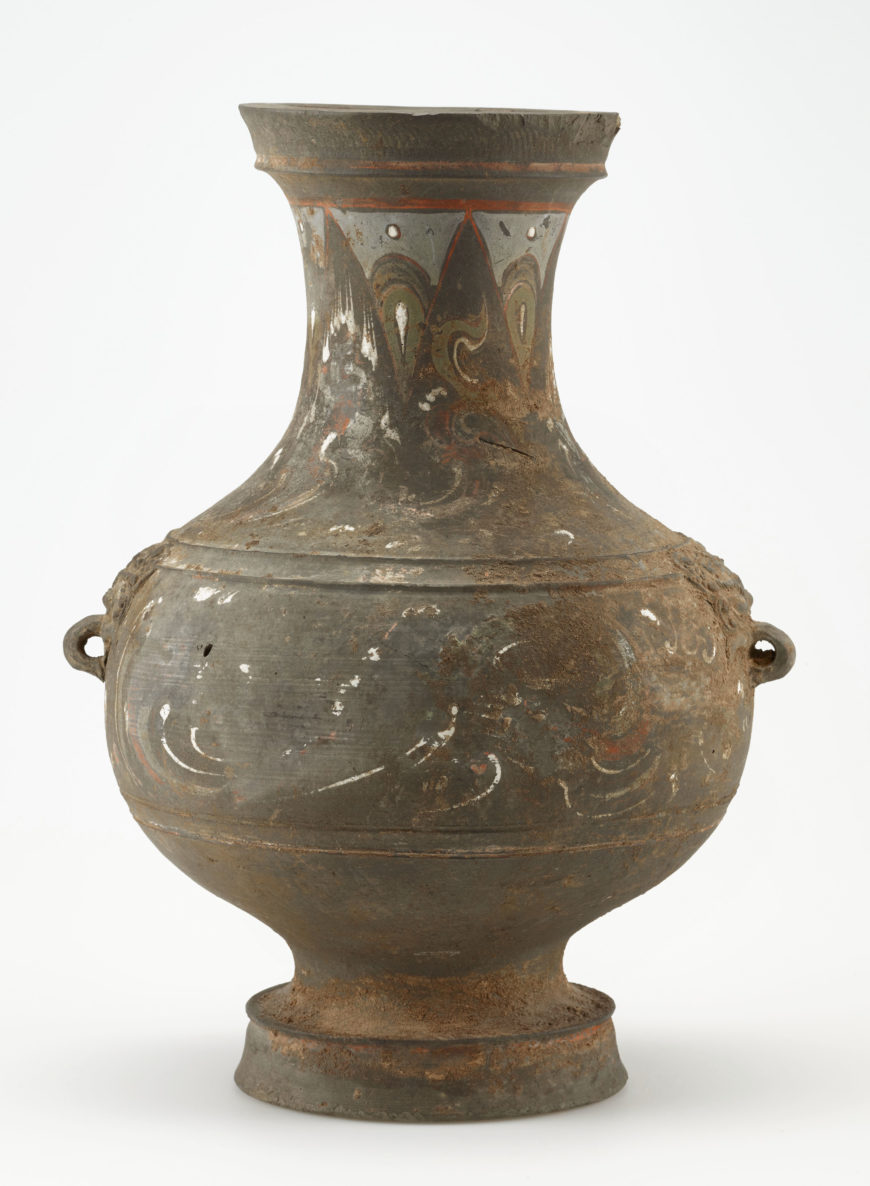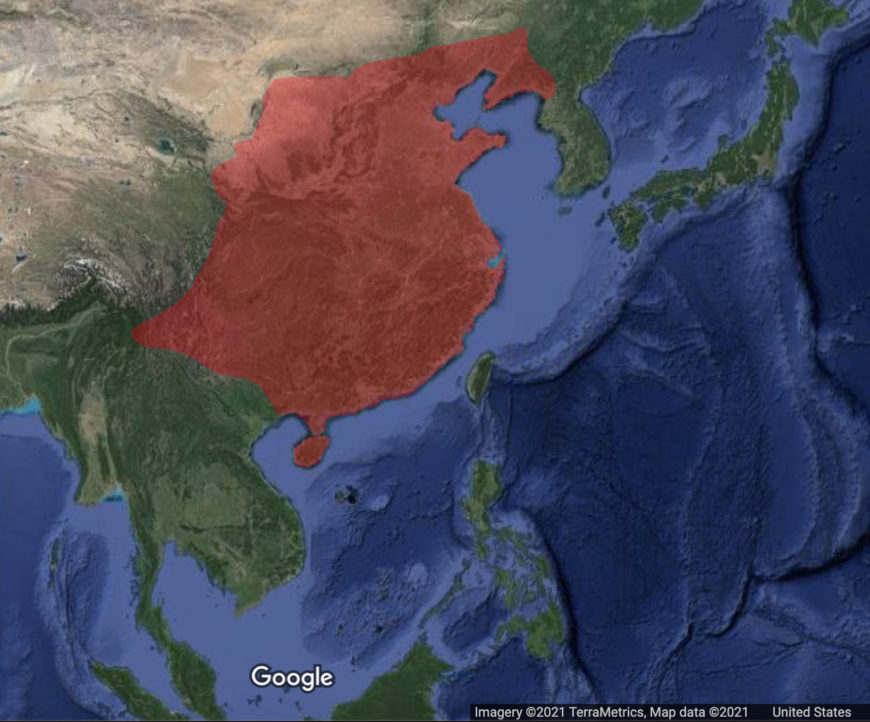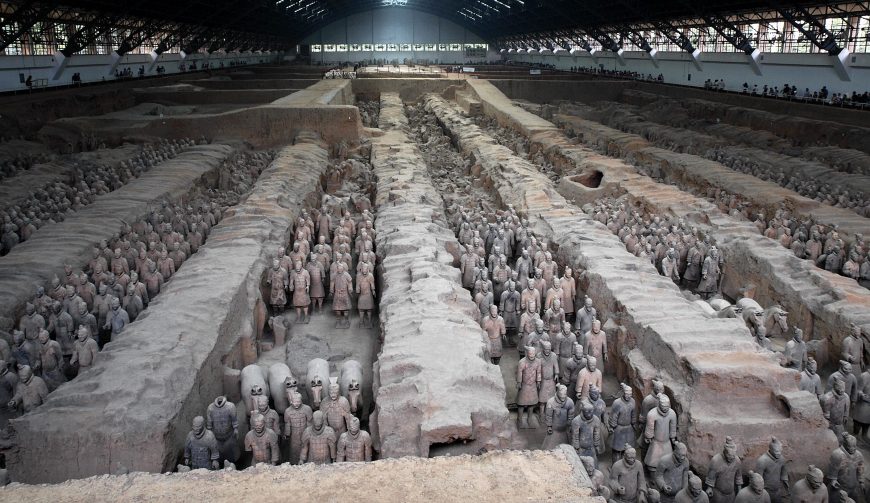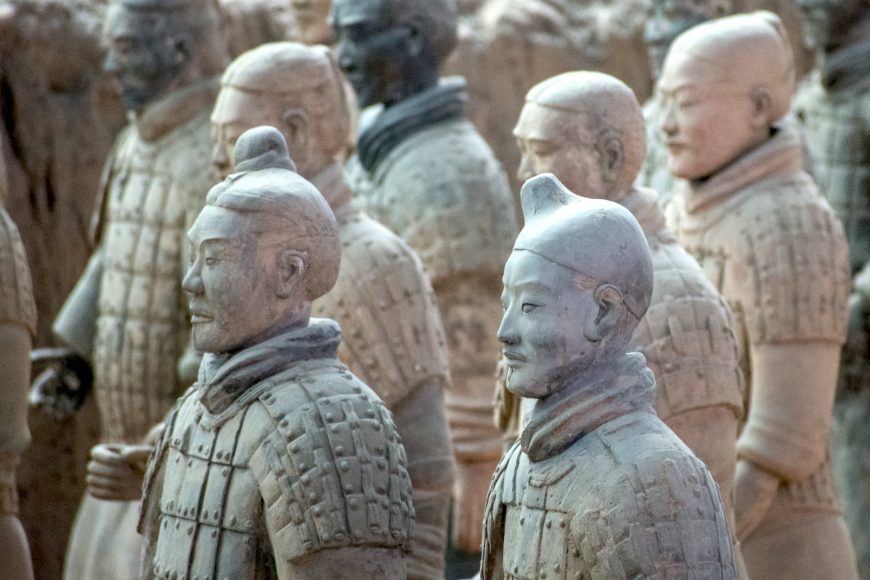
Jar (hu), Qin dynasty, 221 B.C.-206, ceramic, China, 34.3 high x 25.6 x 22.6 cm (Arthur M. Sackler Gallery, Smithsonian Institution, Washington, D.C.: Long-term loan from the Smithsonian American Art Museum; gift of John Gellatly, 1929.8.328, LTS1985.1.328.1)
At the end of the Warring States period (475–221 B.C.E.), the state of Qin conquered all other states and established the Qin dynasty (221–206 B.C.E.). It was China’s first unified state whose power was centralized instead of spread among different kingdoms in the north and south. Although it lasted only about fifteen years, the Qin dynasty greatly influenced the next two thousand years of Chinese history.
The first emperor of Qin, known as Qin Shihuangdi (literally “First Emperor,” 259–210 B.C.E.), instituted a central and systematic bureaucracy. He divided the state into provinces and prefectures governed by appointed officials. This administrative structure has served as a model for government in China to the present day. Shihuangdi sought to standardize numerous aspects of Chinese life, including weights and measures, coinage, and the writing system. These standards would last for centuries after the fall of his short-lived dynasty. He also ordered many construction projects. He expanded the network of roads and canals throughout the country. The first Great Wall (not the one that exists today) was built during his reign.
Despite the many accomplishments of the Qin dynasty, Shihuangdi was considered a severe ruler. He was intolerant of any threats to his rule and established harsh laws to maintain his control. He had his chief advisor burn all books that were not written on subjects he considered useful (useful subjects included agriculture and medicine) and reportedly buried hundreds of scholars alive.
The Qin dynasty is one of the best-known periods in Chinese history in the West because of the 1974 discovery of thousands of life-size terracotta warriors. They were part of the vast army guarding the tomb of Qin Shihuangdi. These figures were modeled after general categories of soldiers, such as archers and infantrymen, but possessed some individual characteristics as well. The warriors reflect Shihuangdi’s reliance on the military to create and maintain a unified China and indicate his desire to retain a protective army in the afterlife.
Following the death of Qin Shihuangdi, the Qin dynasty collapsed into chaos. In 206 B.C.E., China was reunited under the rule of the Han dynasty (206 BCE–220 C.E.).
This resource was developed for Teaching China with the Smithsonian, made possible by the generous support of the Freeman Foundation
Additional resources:





